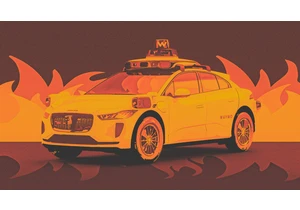This holiday season, Walmart’s innovations in data science are enabling its stores to make deliveries to 12 million more households.
The company has rolled out a new data-driven process for more precisely calibrating the delivery areas—what it calls “catchment areas”—around each of its thousands of U.S. stores. The new model, built with a mix of open-source software and in-house code, takes into account such factors as customer demand, driver capacity, and drive time. It computes these factors across points in a contiguous, hexagonal grid—similar to the pixels that make up a digital image—rather than relying simply on distance from a particular store or lower-precision divisions of the map-like zip codes.
“This is helping us to adapt how we service our customers, by allowing us to go from a fixed-mile radius into a much more dynamic catchment area that caters to the needs of the customers that a particular store will serve,” says Parthibban Raja, senior director of engineering, Walmart global tech division.

The new process relies on Walmart’s extensive work around data management, including a visualization layer that lets company leaders adjust various parameters and see how they would increase or decrease the potential number of customers served as delivery areas get redrawn around each of Walmart’s stores. The model incorporates proprietary Walmart information, such as historic order data from particular stores as well as public information from sources including the U.S. Census to help anticipate customer needs. And, Raja says, his team works closely with customer privacy and security teams within Walmart to make sure that any customer data is processed anonymously and securely.
It’s part of a general philosophy within the company of collaborating around data-driven analyses and experiments, and making information like geographical data easily accessible to business leaders, Raja says.
“With the geospatial platform, our focus has always been how we can democratize the data—give it to the hands of our business users to be able to use that system to help us serve more customers,” Raja says.
Since the goal was to have the technology in place for the holiday season, Walmart implemented the new catchment area model earlier this year, allowing time to test the system. And while the company doesn’t disclose the total number of households it serves via delivery, Raja says the additional 12 million potential delivery destinations is a “significant increase” over the previous system. In some cases, customers will be able to get shipments from multiple stores since delivery areas can overlap.
And as new information about customer habits and order patterns continue to come into the system, the model will update with the new data, providing new recommendations and visualizations to show how catchment areas can be continually refined.
“We are in this era of adaptive retail,” Raja says. “The ability for us to dynamically adapt to the changing behavior, the preferences, and needs of our customers through advanced technologies is much more important these days.”
Jelentkezéshez jelentkezzen be
EGYÉB POSTS Ebben a csoportban

Social media users have been having a field day with Waymo’s autonomou

If you’re not on TikTok, you may not have heard of Aaron Parnas. But for many young people across the U.S., he’s a prominent political news source, with over 3.5 million followers on TikTok and ju

Getting a sense of the scale of social media platforms can be tricky. While tech companies often share self-serving metrics—like monthly active users or how likely users are to buy products after


Fun fact: The saying “work smarter, not harder” is coming up on its 100th birthday. Coined

If you’ve followed Apple for any length of time, you’ve no doubt come across the notion that the company doesn’t rush into adopting cutting-

Every now and then, you run into a tool that truly wows you.
It’s rare—especially nowadays, when everyone and their cousin is coming out with overhyped AI-centric codswallop tha
